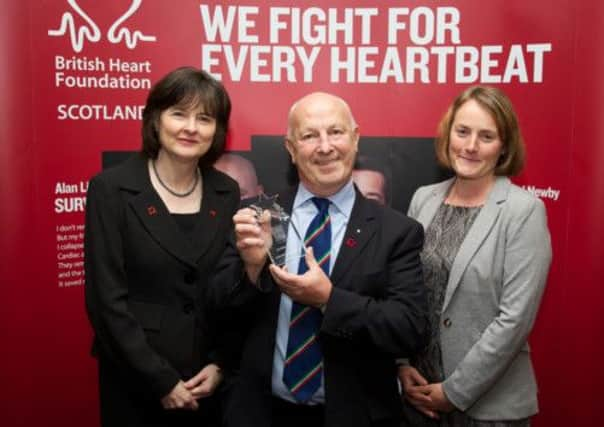New scans to detect heart attack risk


A study by the University of Edinburgh found that special imaging could identify people at high risk of having a heart attack so they could be treated to prevent it happening. Experts said the technique could be used to tackle the problem of patients living with a “ticking time bomb” inside them.
Every day in the UK about 200 people die from a heart attack, and death rates from coronary heart disease in Scotland are among the highest in the country. The new test, developed by Dr Nik Joshi and a research team, combines scanning techniques known as positron emission tomography (PET) and computed tomography (CT).
Advertisement
Hide AdAdvertisement
Hide AdCT scans show medics the structures inside the heart, while the PET scan uses the radioactive substance sodium fluoride to reveal information from within the blood vessels.
Information from these two scans combined identify where blood vessels have been damaged, increasing the risk of a heart attack. The researchers, writing in The Lancet, looked at two groups of patients – 40 who had just had a heart attack and 40 with the condition angina.
Using the scanning technique – currently mainly used to diagnose cancer – the researchers were able to see areas where there were dangerous build-ups of fatty plaques in arteries that were in danger of rupturing.
Dr Joshi said: “We have shown, for the first time, that high-risk fatty plaques – on the verge of potentially causing a heart attack – can be detected on a PET-CT scan in the arteries supplying the heart with blood.
“If we are now able to identify patients at highest risk of having a heart attack, we could possibly take steps to prevent this catastrophic event. This could fundamentally change the way we approach and manage these patients, reducing their risk of a future heart attack.”
Treatment could include giving patients high doses of statins – cholesterol lowering drugs – or operating to fit a stent to open up narrowed arteries.
Professor Peter Weissberg, medical director at the British Heart Foundation, which part-funded the research, said: “Nearly 20 years of BHF-funded research has led us to this point.
“We now need to confirm these findings, and then understand how best to use new tests like this in the clinic to benefit heart patients.”
Case study: ‘After you’ve had one you don’t expect another’
Advertisement
Hide AdAdvertisement
Hide AdAfter suffering two heart attacks, Gordon Steel knows the symptoms that something is wrong only too well.
He suffered his first heart attack in October 2008 after falling ill at a work meeting.
Mr Steel, pictured right, a 58-year-old former smoker from Larkhall, was in intensive care for four days and had surgery to have a stent put in because one of his arteries was choked.
Just a few months later, in March 2009, he had another heart attack. He said: “I knew what was happening that time. I knew it was definitely a heart attack because of the pain in my chest.”
He has welcomed the research that could lead to screening of patients at risk of a heart attack.
“After you have had one heart attack, you don’t expect you’re going to have another one,” Mr Steel said.